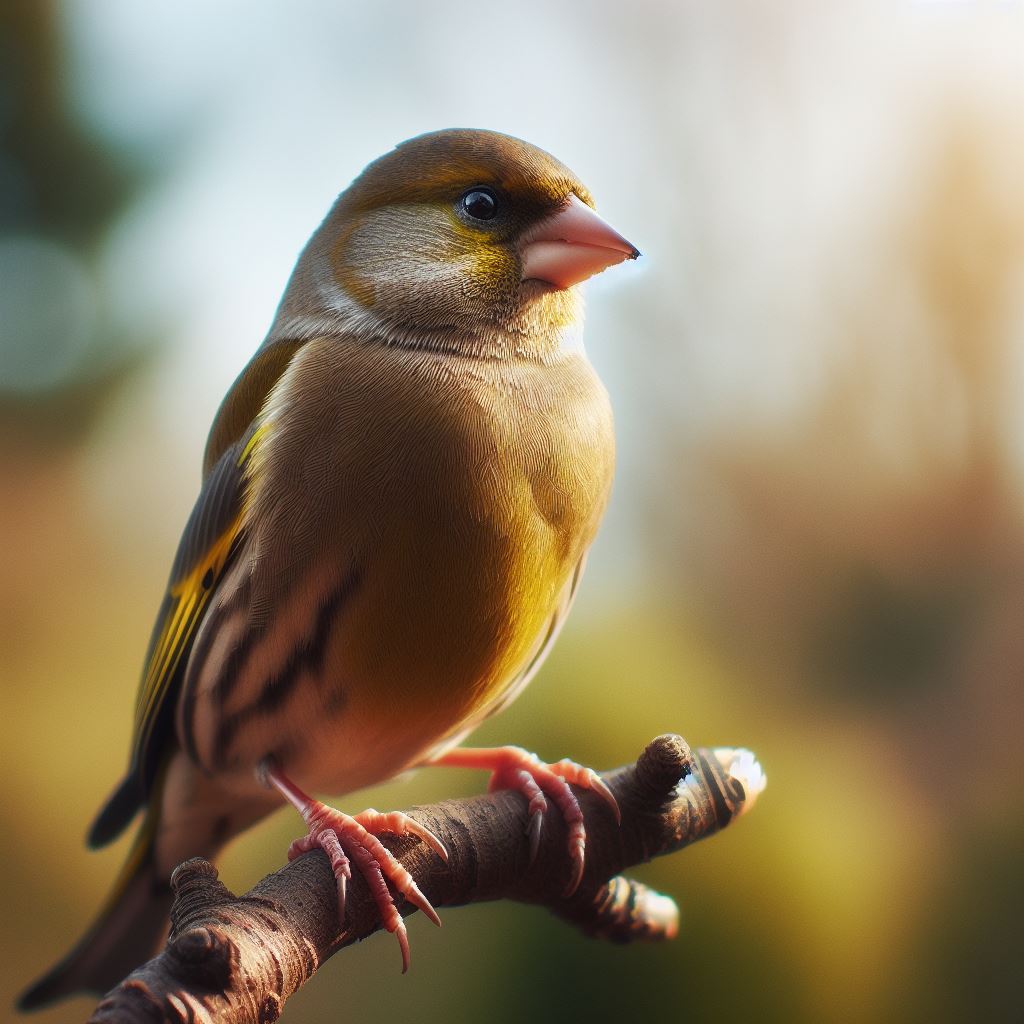Most beautiful small birds - Sykalo Eugen 2024
European Greenfinch (Chloris chloris)
Identification:
- Species name: European Greenfinch, Greenfinch
- Scientific name: Chloris chloris
- Family: Fringillidae (Finches)
- Order: Passeriformes (Songbirds)
- Subclass: Neornithes (Modern birds)
- Class: Aves (Birds)
Description:
- Size: Small finch, about 15 cm (5.9 in) long with a wingspan of 24.5-27.5 cm (9.6-10.8 in).
- Body shape: Stocky and plump, with a short neck, a thick, conical beak, and a slightly forked tail.
- Plumage color:
Males (breeding season): Olive-green upperparts with yellow wing flashes, yellow underparts, and a grey-streaked head.
Females and non-breeding males: Duller green upperparts, paler yellow underparts, and more streaked head and breast.
Brownish legs.
Dark eyes.
- Beak: Thick and conical, pale pinkish-grey in color, well-suited for cracking seeds and gleaning insects.
Behavior:
- Method of feeding: Primarily seed-eaters, foraging on a variety of seeds, including weeds, fruits, and buds. Also glean insects and berries.
- Reproduction: Builds cup-shaped nests in trees or bushes. Lays 3-5 pale blue eggs with dark markings. Both parents care for the young.
- Movement: Resident in most of its range, with some local movements in response to food availability.
- Communication: Varied song with high-pitched calls, whistles, and chattering. Males sing to defend territory and attract mates.
Ecology:
- Habitat: Open woodlands, farmland, gardens, and parks with trees and bushes.
- Diet: Seeds, including sunflower, hemp, dandelion, and various weeds. Also glean insects, berries, and buds.
- Hunting methods: Forages on the ground and in trees, pecking at seeds and gleaning insects from leaves and branches. Often visits bird feeders.
Distribution: Found across Europe, North Africa, and western Asia. Introduced to other areas, including Australia and New Zealand.

The European Greenfinch — a feathered olive gem gracing gardens and woodlands across Europe and beyond. This seemingly unassuming songbird might appear like a simple seed eater at first glance, but beneath its modest green plumage lies a treasure trove of fascinating facts and adaptations that will leave you captivated by this versatile avian resident:
Masters of Disguise: Don't underestimate the Greenfinch's camouflage skills! Their streaked brown and green plumage blends seamlessly with leaves and branches, offering them protection from predators and allowing them to sneak up on unsuspecting seeds. Imagine them as feathered chameleons with built-in leafy costumes!
Unconventional Vocalists: Forget warbling melodies; Greenfinches have a unique singing style. Their song is a mix of chatters, trills, and even whistles, often incorporating the calls of other birds. It's like they're feathered DJs with built-in remix capabilities!
Unexpected Opportunists: Greenfinches aren't picky eaters. They are diversivores, readily adapting their diet to the seasons and what's available. From seeds and buds to berries and even insects, they utilize their strong beaks to tackle a variety of tasty options. Think of them as feathered culinary adventurers with built-in miniature buffets!
Hidden Tool Users: Recent research suggests Greenfinches might be smarter than we thought! They have been observed using twigs and sticks as tools to pry open stubborn seeds and even manipulate objects to reach hidden treats. Talk about feathered MacGyvers with built-in pocket toolkits!
Symbiotic Symphony: Greenfinches play a vital role in the ecosystem. By dispersing seeds through their droppings, they help plants spread and take root, contributing to the vibrant tapestry of landscapes. These feathered gardeners even help control some insect populations, maintaining a healthy balance in their habitats.
Cultural Charmers: For centuries, the Greenfinch has held a special place in European cultures. It appears in poetry, paintings, and even folklore, often symbolizing hope, renewal, and the simple beauty of everyday life. It's a testament to the enduring fascination we have with this adaptable and resilient bird.
Unexpected Colony Nesting: While not as common as in other species, Greenfinches sometimes engage in cooperative breeding. Helpers, often older offspring or non-breeding individuals, assist the breeding pair in raising chicks, providing extra food and protection. It's a feathered commune with built-in childcare!
Hidden Vocal Variation: Did you know? Greenfinch songs vary geographically! Different populations have unique dialects and variations in their calls, creating a diverse avian choir with regional accents across Europe and beyond.